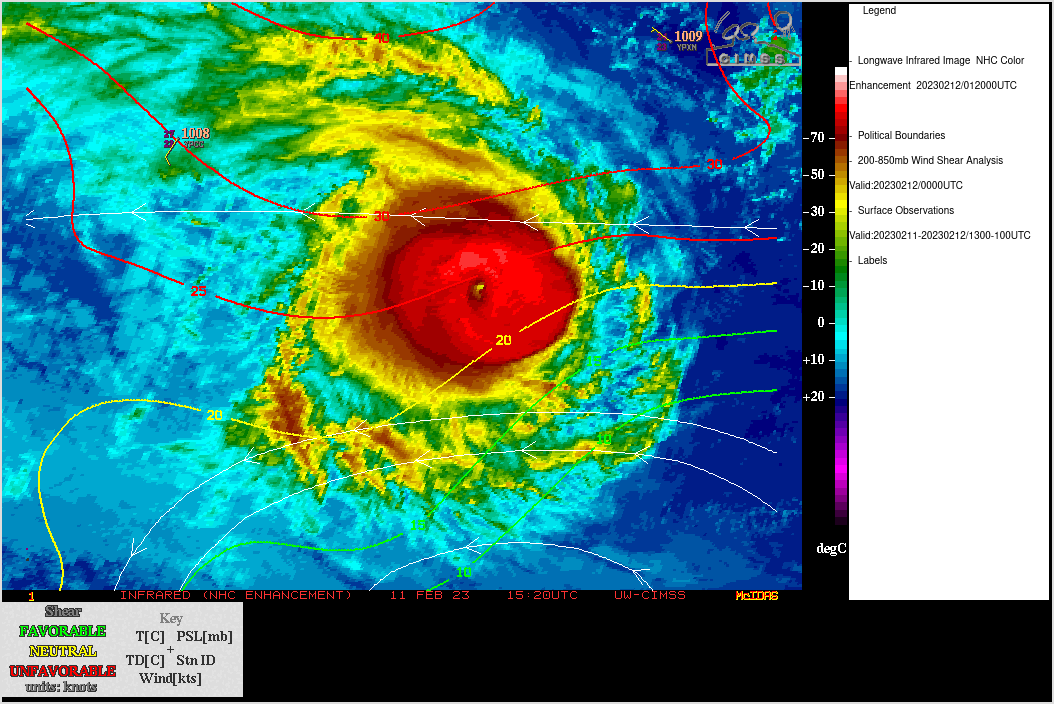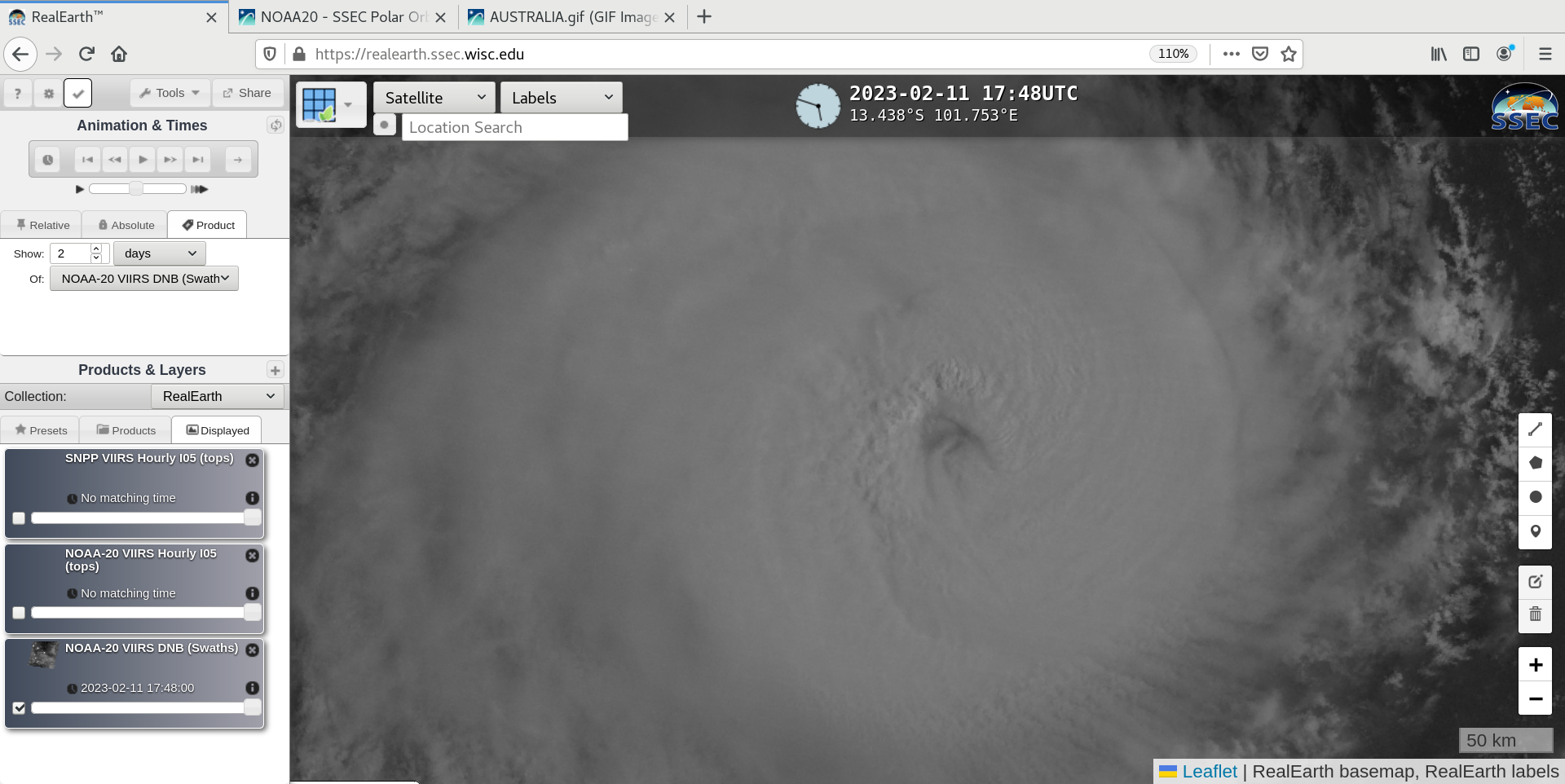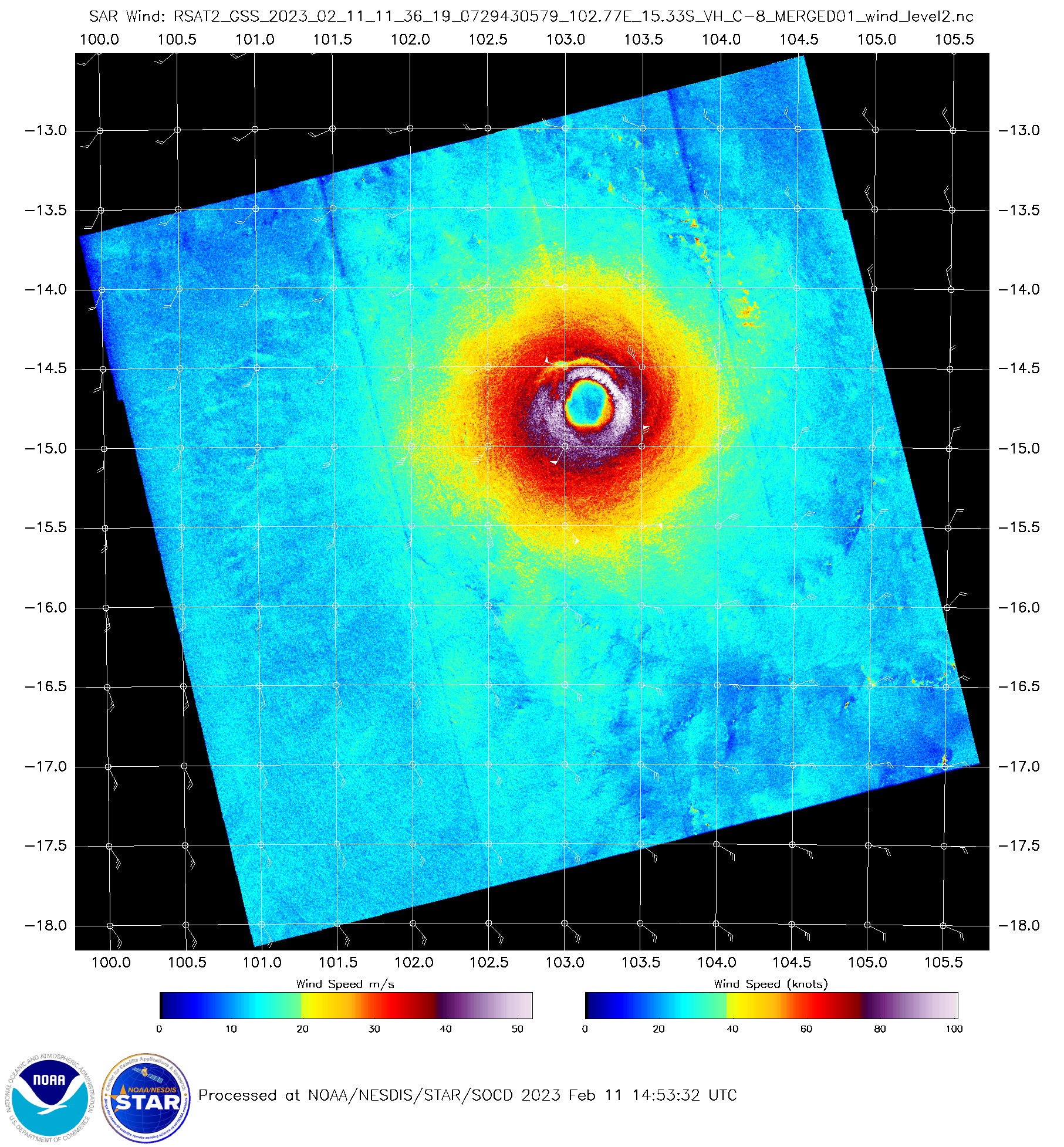Cyclone Freddy reaches Category 4 intensity

JMA Himawari-9 Infrared Window (10.4 µm) images [click to play animated GIF | MP4]
A NOAA-20 VIIRS Day/Night Band (0.7 µm) image valid at 1825 UTC on 11 February (below) showed the eye of Freddy.
Himawari-9 Infrared Window (11.2 µm) images from the CIMSS Tropical Cyclones site (below) include contours and streamlines of deep-layer (850-200 hPa) wind shear. The intensification of Freddy occurred in spite of this unfavorable environment of moderate to strong eaterly shear — however, the storm was moving over relatively warm water (with Sea Surface Temperature values around 29ºC).
JMA Himawari-9 Infrared Window (11.2 µm) images, with contours and streamlines of 850-200 hPa wind shear
RCM/Radarsat-2 SAR winds at 1136 UTC on 11 February (source) are shown below — a maximum wind speed of 106 knots was indicated within the northeast quadrant.



